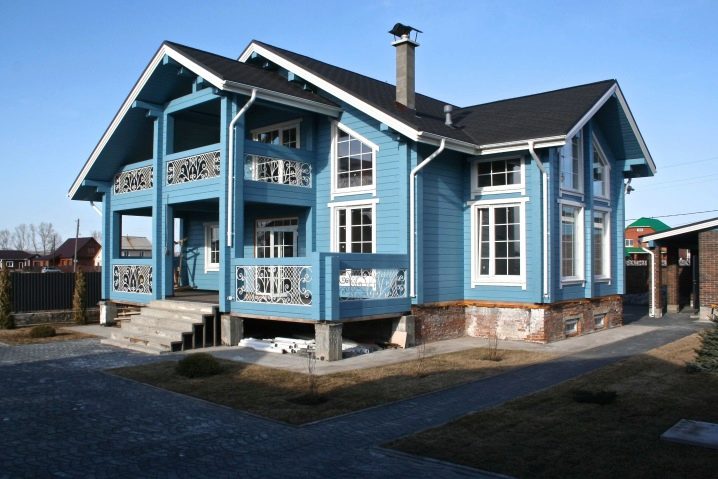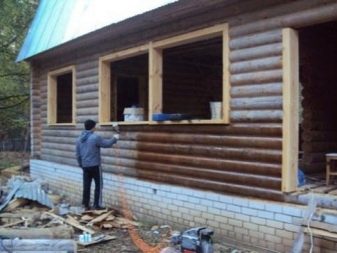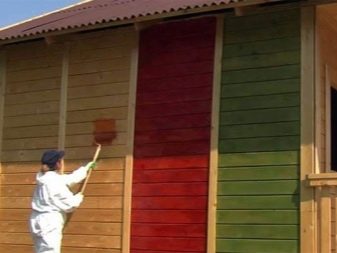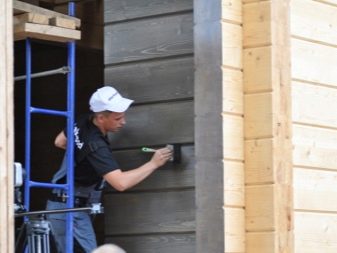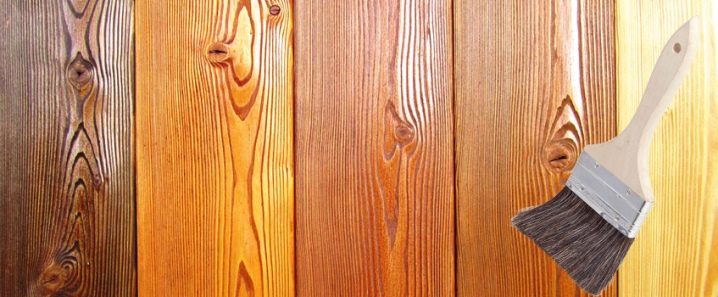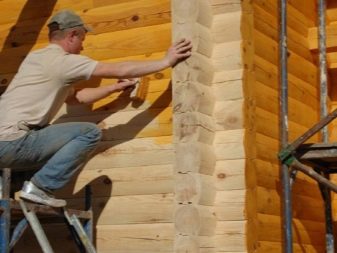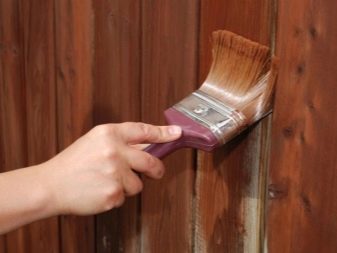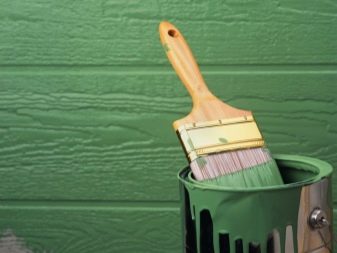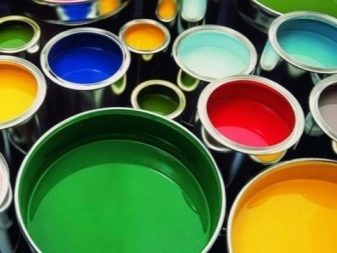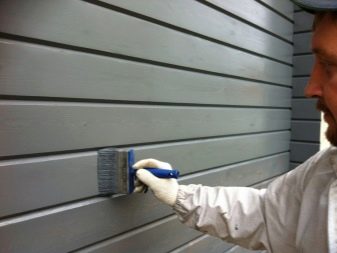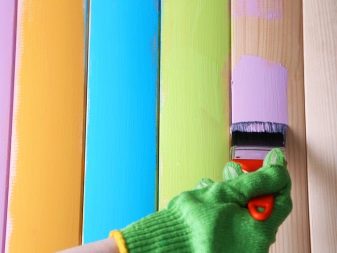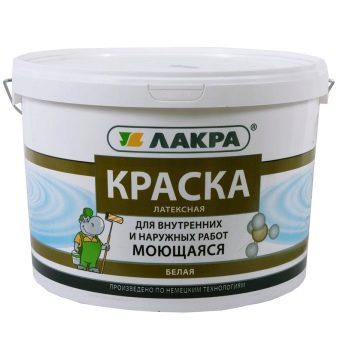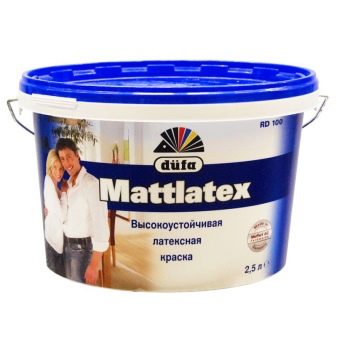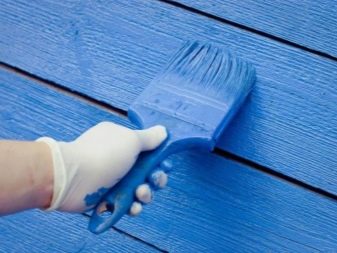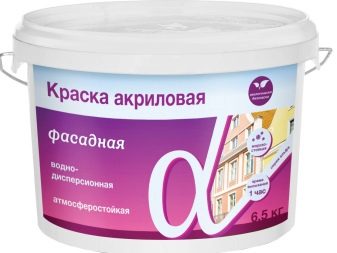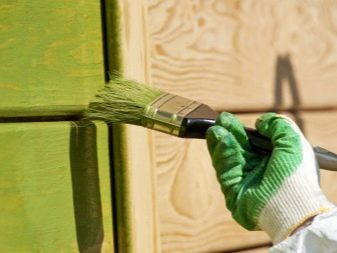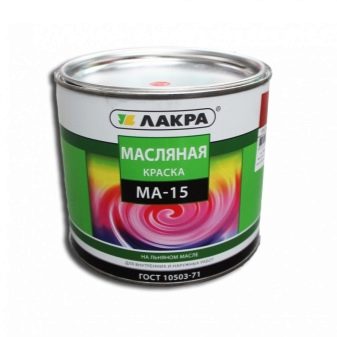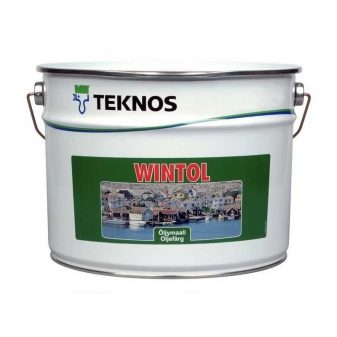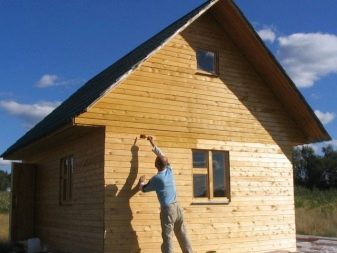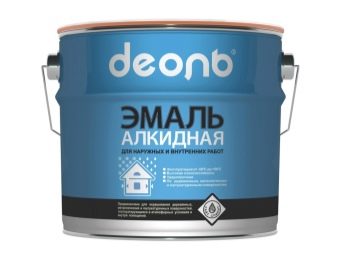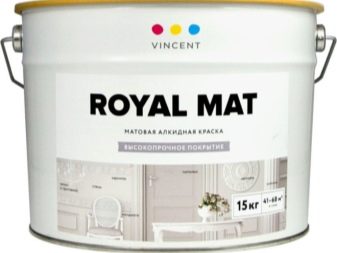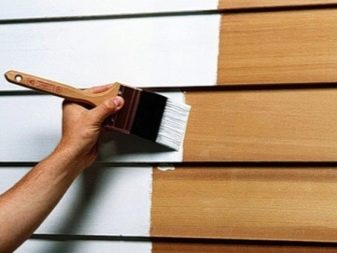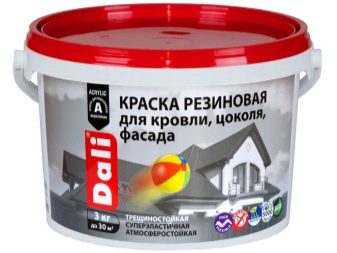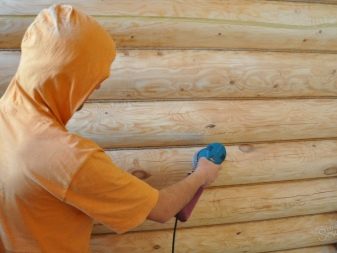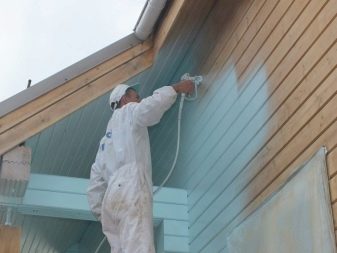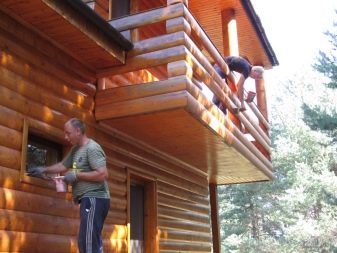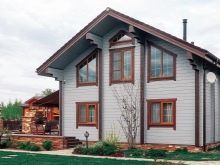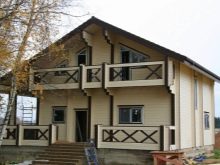External and internal coloring of the house from a bar
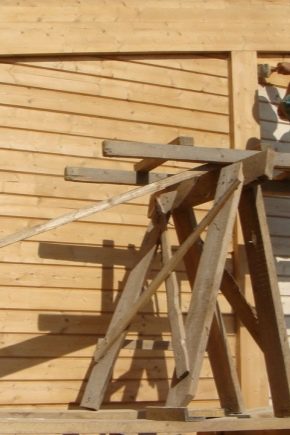
A house from a timber, recently erected or being under repair, needs to be addressed in the matter of protecting wood from environmental exposure. In addition, the new finish should improve the aesthetic quality of the building. For these purposes can be used varnish or various types of paints of the desired color and shade.
Special features
Wood in outdoor conditions is a very unstable material that needs additional protection. The use of paint for these purposes has its positive and negative sides. This finish has several important advantages.
- Improving aesthetics. The house, painted in a correctly chosen color, pleasantly pleases the eye and is in harmony with the adjacent territory and the objects placed on it.
- Protection from aggressive atmospheric phenomena. This is primarily due to moisture: rain and snow, but also applies to strong wind, hail and other phenomena.
- Biological protection. Wood is an excellent breeding ground for mold and other microorganisms, in addition, bugs can get there, and rodents feed on it. High-quality paint will protect the material from these problems.
- UV protection. Sunlight also has a negative effect on wood: it leads to drying and fading of its natural color.
- Ability to save authentic coloring. Lessiruyushchy paint and varnish compositions cover a bar with a transparent coating, allowing you to fully enjoy its natural beauty.
- Elimination of minor defects. Wood is a heterogeneous material, therefore often on its surface there are pigmentation spots or other defects.
The negative sides of paintwork materials are the following:
- Some types of lacquers interfere with the free vapor exchange of walls, which contributes to dampening them and prevents natural ventilation of the house;
- paintwork substances are flammable, which impairs fire safety.
What to process?
The main protective function is carried out by a paint and varnish covering, however, except it, it is possible to use special impregnations strengthening wood resistance to various negative factors.
Impregnation
The composition, which penetrates deep into the wood, is used exclusively to enhance the protective and operational properties of the material. Saturate the material carefully. Impregnation performs a number of characteristic tasks, including the following ones:
- improvement of the adhesive properties of wood before staining with the main paint and varnish materials;
- filling the porous structure of wood, crevices and irregularities in order to reduce the consumption of paintwork material - saving money;
- antibacterial and anti-tumor protection of wood, for example, antiseptic composition;
- strengthening fire safety through flame retardant solutions;
- reducing the impact of ultraviolet on wood;
- protection from putrefactive processes using hydrophobic compounds that enhance the waterproofing of the material.
Types of paints for the house of timber
The market of paints and varnishes is filled with a wide range of paints of various types, each of which has its own characteristic features: positive and negative qualities. When building with your own hands, you must treat the surface of the plank board before laying the bottom layer of paint. These stages are very important. For finishing work, the following varieties of paint and varnish products can be used.
Latex
Modern tool for painting surfaces of various types, including wood, has excellent performance and aesthetic qualities. Separately, you can select such properties as:
- high finishing speed is ensured by a short drying period - 1–2 hours per layer;
- strong adhesion to the wooden surface provides a long period of operation of the coating without repair work;
- environmentally friendly composition, the absence of toxic components, complete hypoallergenic;
- excellent protection against atmospheric phenomena: rain, snow, hail and others;
- high resistance to ultraviolet radiation;
- biological inertness - a mold fungus and other microorganisms do not reproduce on it;
- high vapor permeability ensures the ventilation of the facade, as a result, there is always fresh air in the house, moreover, the moisture trapped in the walls and interior spaces evaporates freely, without causing dampness and deterioration;
- good mechanical strength;
- excellent elasticity - the surface layer does not collapse from the expansion or contraction cycle when heated or cooled from high temperature in hot summer;
- Alkaline detergents can be used to clean the surface.
The disadvantages of latex compositions include poor frost resistance, which makes their use on the facade impractical. The second minus is relative, because a fungus can multiply on its surface, but it is enough to apply an antiseptic on the surface to be painted, and this problem is solved.
Acrylic
Dyes of this type are widely used because of the good ratio of price and the original result, although such paints are not cheap. Other features of such compositions are as follows:
- the speed of finishing works is provided by a short period of drying;
- powerful adhesion - adhesion to the surface ensures a long service life - about 20 years;
- high resistance to aggressive weather phenomena;
- a weak, unexpressed smell makes it possible to work with paint without special protection;
- high elasticity of the paint ensures the integrity of the surface layer during temporary deformations;
- the color of the dye can be modified to the desired shade by means of special pigment additives;
- high vapor permeability;
- excellent moisture resistance;
- safety, because the composition does not contain toxic components, does not provoke allergies;
- resistance to sunlight.
The relative shortcomings can be attributed to the rapid drying of the composition, in which an open can of dye begins to lose its optimal properties within 5–6 hours. Another difficulty arises when self-color change, if you do not use the scales when adding color, it will be almost impossible to repeat the shade.
Oily
A classic wood staining agent with known strengths and weaknesses. Among the characteristic properties there are such advantages as:
- strong adhesion;
- a wide choice of color palette, paints mix well and can be modified to the desired shade with pigment additives;
- can be applied over the existing paint layer, except water-based solutions;
- good resistance to moisture and temperature fluctuations;
- affordable price.
The disadvantages of oil paint include the following:
- sharp characteristic odor;
- long drying time of the layer - about 12 hours;
- poor UV resistance;
- low durability, on average it is necessary to renew painting every 3 years;
- weak vapor permeability prevents free moisture from the walls and interiors, the first ones become damp and can rot, the second one can cause an unpleasant marsh odor, there is no natural ventilation of the facade - the air inside the house is more sultry.
Alkyd
Alkyd paint is a paint based on alkyd resins. Pronounced strengths are compensated by specific disadvantages. One of the main advantages is an affordable price. The advantages of such dyes include the following:
- excellent moisture resistance;
- short period of drying;
- excellent resistance to temperature extremes;
- maximum frost resistance;
- long period of operation - 10–12 years;
Weaknesses are as follows:
- poor adhesion to wood;
- must be applied on a completely dry surface, which is not always realistic in the conditions of the street;
- vapor proof, there is no ventilation of the facade - free evaporation of moisture from the walls and interior.
Rubber
One of the newest types of paint with unique performance without the weaknesses that are provided by its polymer base.
The characteristic features of the paintwork material are the following:
- good adhesion to wood;
- the frozen layer is characterized by high strength and elasticity, as a result, the coating retains its integrity during expansion and subsequent compression, the surface is resistant to mechanical shock, loads, friction, vibration;
- it can be put with any tools for painting: brush, roller, spray gun;
- to go to bed perfectly, forms a flat surface without overflows;
- absolute waterproofing;
- excellent vapor permeability, the house, covered with rubber paint, “breathes”, inside is always fresh air, moisture from the rooms and walls evaporates freely, and they do not dampen with further consequences;
- can be dissolved only by water;
- a very fast process of finishing works, the period of drying the paint is from 30 to 60 minutes, full hardening - about 1.5–3 hours;
- excellent weather resistance;
- the structure of the dye is resistant to sunlight, the shade does not fade during the entire period of operation;
- safe composition - no toxic components, complete hypoallergenic;
- long service life - about 10 years;
- paint is not cheap, but considering the excellent performance qualities, the price-effect ratio is one of the best.
There are no characteristic drawbacks of rubber paint, but it is necessary to strictly observe the technology of application, in particular the conditions under which dyeing should be carried out, and what can be applied only in thin layers.
How to paint?
Outside
To obtain a good coating, it is not enough to choose a high-quality paint, in addition, you need to adhere to the method of their proper application. It is desirable to paint immediately after construction. First of all, it is necessary to prepare the tools that will be used to paint the timber. These include the following:
- roller with a long handle;
- medium and small brush or spray gun;
- grinding machine with a fine abrasive;
- antiseptic solution for primer;
- paints, which will be covered with timber;
- brush.
In the future, you need to adhere to a specific procedure.
- Surface preparation. With the help of a sander, all traces of the old finish are removed, if the house is new, then irregularities are removed. Further, the surface is cleaned with a brush from debris after grinding, dust, dirt. In the presence of a vacuum cleaner, the cleaning process is significantly accelerated. The more powerful it is, the better the waste will be removed.
- Primer. The solution is applied in two layers, first the first thoroughly applying the composition over the entire surface, soaking each crack, bend, groove and other irregularities. It dries out in about an hour, but it is better to clarify the drying time for a particular primer. Next, apply the second layer.
- Painting. The selected coloring agent is applied in 2–3 layers. Each subsequent layer after drying the previous one. The final coating is often applied varnish and also in several layers. It is better to paint with a brush in the horizontal plane with even measured strokes, without picking up a large amount of dye on it.If a spray gun is used, coloring is also carried out in several layers.
Inside
Painting glued and profiled material is a rather complicated process. Coloring the interior of the house from a bar also has its own specifics. Phased work also consists of several stages.
- Surface preparation. First, the walls are cleaned with a stiff brush of coarse debris and dust, oil and tar stains. If the brush can not cope with stains, you need to apply emery.
- Elimination of defects. All shallow depressions and cracks are filled.
- Antiseptic. It is obligatory to treat with an antiseptic solution, as a varnish or paint for interior work does not provide such powerful protection as for exterior work.
- Strengthening of coupling. Before painting the wood should be slightly polished with sandpaper or a grinder. This will provide a stronger bond between the dye and the material. And also small irregularities or protrusions are eliminated, and the treated area is covered with an antiseptic.
- Coloring. Apply the selected paintwork.
Successful examples and options
- Light contrast. The color of the bar is completely overlapped with white halftone paint, the ends of the walls and beams are painted in a dark contrast color and emphasize the main color.
- Opening varnish. This coating emphasizes the natural beauty of the material and slightly darkens its color. Wood, varnished, looks very natural, this exterior best conveys the atmosphere of a wooden house inside.
- Calm The main part is painted in sky-blue color and creates a feeling of a calm and peaceful place, the ends of the beam are painted in a dark shade, which is perfectly combined with the main color. The color of bricks and frames - light brown and sand are also in harmony with the basic shade.
For information on how to quickly and accurately paint a house from a bar, see the following video.
